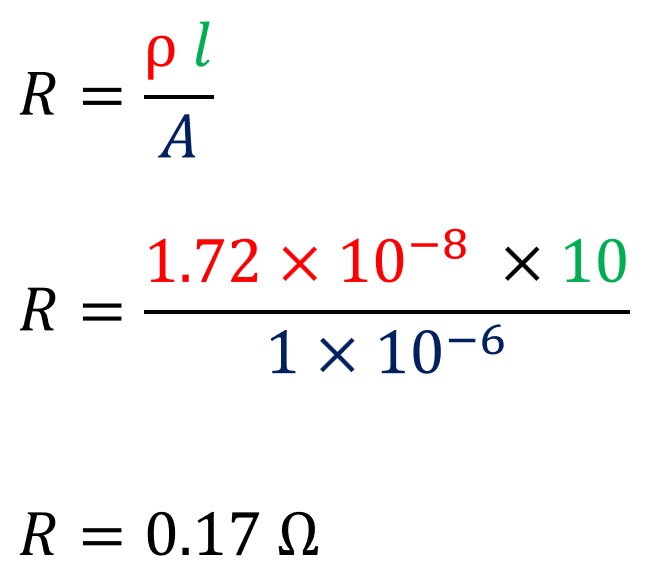Under normal conditions all conductors have resistance. This can be an advantage or disadvantage depending on the application:
Electrical cables must have a low resistance so current can flow without causing excessive heating or voltage drops.
Devices that produce heat such as toasters and electric kettles produce heat by passing current through wires made of an alloy called Nichrome, which is purosefuly designed to have a higher resistance.
The resistance of a length of wire is dependent upon four key properties: The length of the wire, its cross sectional area (CSA), its resistivity and the temperature. For now we assume that the temperature is 20°C so we can ignore this.

Resistivity is the measure of how well a conductor is able to pass current. Different metals are able to conduct electricity to a greater or lesser degree than others. Resistivity is represented by the Greek letter ρ and is measured in (Ω/m). The table below shows the resistivities of a range of common metals.

The resistance of a wire is calculated using the formula below:

Calculate the resistance of a length of copper wire that is 10 metres long and has a cross sectional area of 1 mm2


